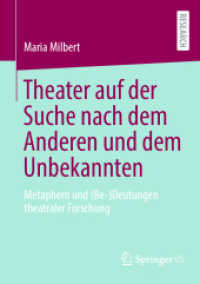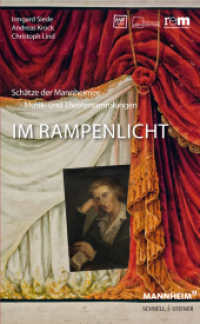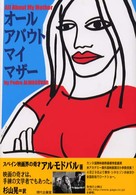- ホーム
- > 洋書
- > ドイツ書
- > Humanities, Arts & Music
- > Arts
- > history of arts
Full Description
This Festschrift is dedicated to Edward J. Olszewski and was created by his former PhD students in gratitude and honor of a professor whose innovative and comprehensive research spans the Renaissance and Baroque periods. His research provided much insight to the arts, issues of patronage, conservation, and context. The text includes an array of topics conceived by each author while studying with Olszewski. His intense seminar on Michelangelo was the catalyst for many articles: Jennifer Finkel introduces new ideas regarding the proposed sculptural plan for the façade of San Lorenzo; Dena M. Woodall provides keen insight on the representations of genii on the Sistine Ceiling; Karen Edwards proposes the early creation of the figura serpentinata in Michelangelo's own drawings and paintings; and Rachel Geshwind offers a new interpretation of his use of color symbolism in the Sistine Chapel. This seminar, and another on Mannerism, involved provocative discussion of the competitors of Michelangelo, where the foundation was laid for the much needed re-examination of Baccio Bandinelli's Hercules and Cacus in Michael Morford's article, which introduces the probability of Machiavellian influence, and Christine Corretti's interpretation of Cellini's Perseus and Medusa as the symbol of Cosimo's I ideas of justice and the influence of women in his life. Olszewski's own research on patronage, especially of the Ottoboni, mirrors Henrietta Silberger's article on the collecting habits of Livio Odescalchi. Finally, Holley Witchey provides a personal experience in authenticating works of art in collections (a topic of interest for Olszewski) and ends her essay with a series of important questions for each of us to ask ourselves.








